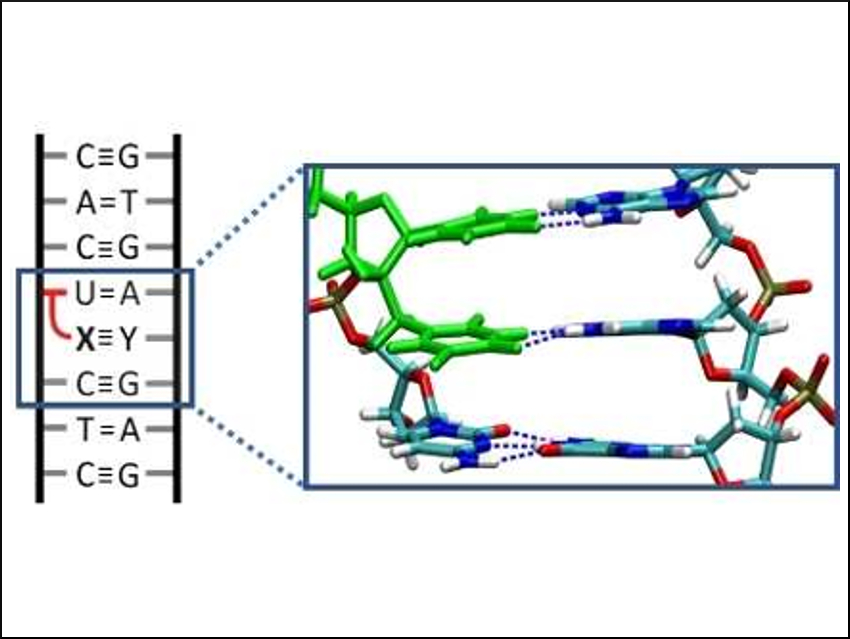Sixty years ago, renowned physicist Richard Feynman first popularized the idea of using DNA for ultracompact data storage. With the commercialization of chemical DNA synthesis and gene editing, this idea is gradually coming to life. However, no serious efforts have yet been undertaken to condense DNA information even further beyond that of natural DNA.
Poul Nielsen, University of Southern Denmark, Odense, and colleagues have taken up that challenge by developing DNA building blocks that encode twice as much information. These so-called “double-headed nucleotides” contain two nucleobases per backbone unit instead of just one (example pictured below).

The double‐headed nucleotides feature cytosine, guanine, thymine, adenine, hypoxanthine, or diaminopurine (X in the picture) linked to the C2′‐position of an arabinose scaffold. This design allows synthetic DNA of a certain length to be constructed from fewer building blocks.
The building blocks are easy to synthesize and incorporate into DNA sequences. Computational studies have revealed that they neatly pair up, comparable to natural DNA (pictured). These results offer a new paradigm in nucleic acid communication, because the information encoded in DNA can be condensed to a shorter length, which could be useful for DNA nanotechnology or DNA-based drugs.
- Base-Pairing Properties of Double-Headed Nucleotides,
Mick Hornum, Julie Stendevad, Pawan K. Sharma, Pawan Kumar, Rasmus B. Nielsen, Michael Petersen, Poul Nielsen,
Chem. Eur. J. 2019.
https://doi.org/10.1002/chem.201901077




